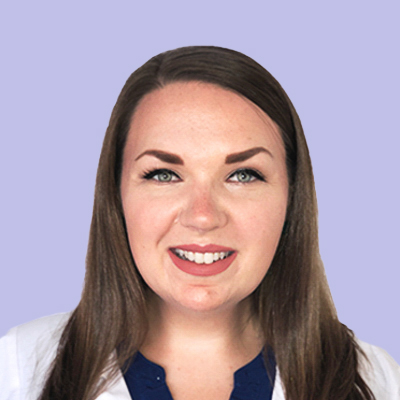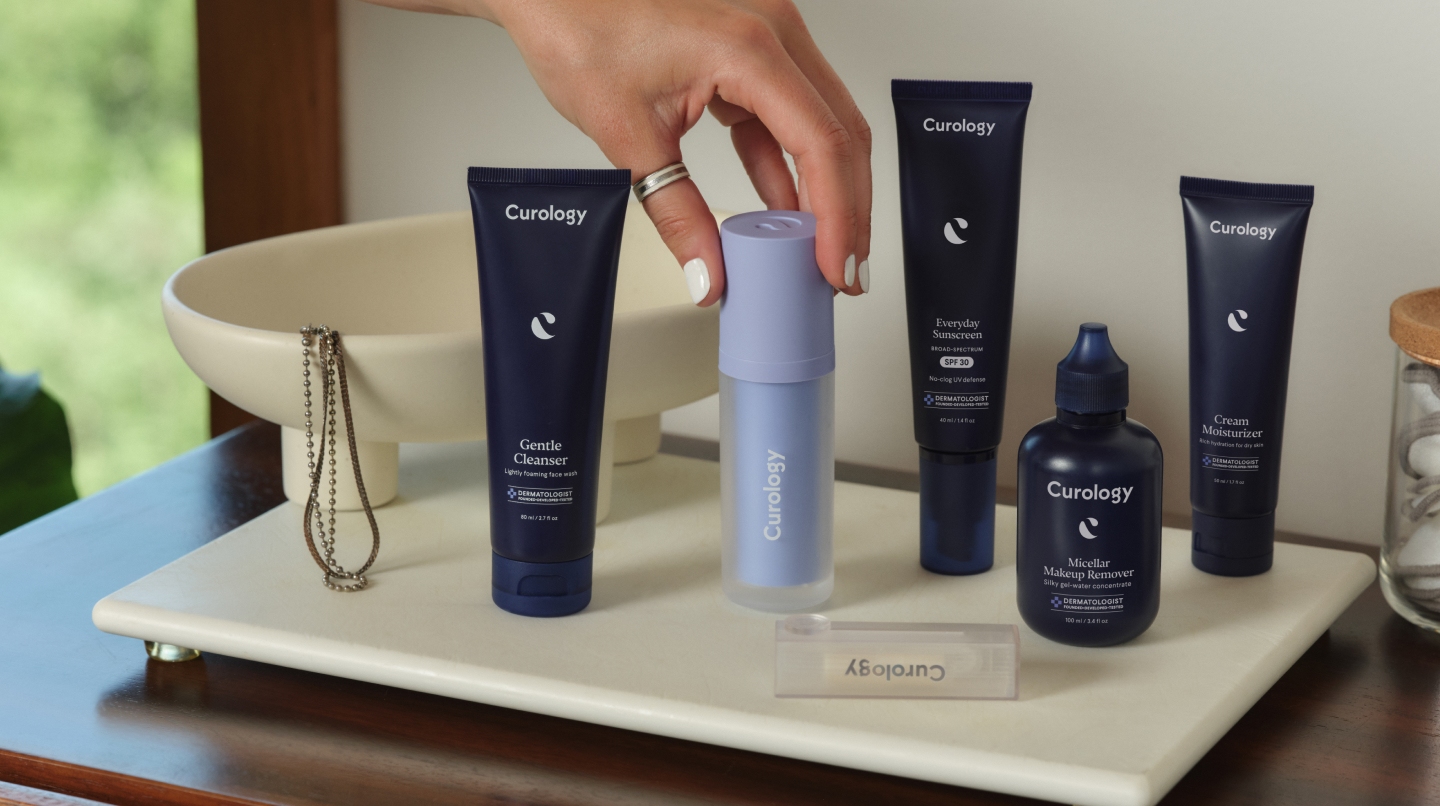How it works:
Share your skin goals and snap selfies
Your dermatology provider prescribes your formula
Apply nightly for happy, healthy skin
How it works:
How it works:
Share your skin goals and snap selfies
Your dermatology provider prescribes your formula
Apply nightly for happy, healthy skin
How it works:
13 common skin problems and how to treat them properly
Acne, rosacea, eczema—just a few common but treatable skin conditions.



Your skin is a living organ—an amazingly adaptable one, at that. But it’s far from invincible. Viruses, bacteria, pollutants, genetics, allergens, the sun, and even the wind can all leave their mark.
But there’s good news! The most common skin problems are treatable. With the right know-how, you may be able to reduce—or even eliminate—your symptoms.
Everyone’s skin is unique
No two people’s skin is exactly alike. How you treat yours plays a big part in determining what skin conditions you may experience. A regular skincare routine (for everyone, even men!), proper nutrition, and drinking plenty of water all go a long way toward supporting overall health and the health of your skin.
But no matter how good your diet is or how often you wash your face, common skin problems like acne can still pop up. According to the American Academy of Dermatology (AAD), acne is the most common skin condition in the United States, affecting up to 50 million Americans annually.¹ One in 10 will experience atopic dermatitis (eczema) in their lifetime.² And 16 million Americans experience rosacea.³
13 types of skin problems affecting the face
Some of the most common skin problems can be broken down into three general categories: chronic, temporary, and age-related. And keep in mind, some of these conditions may fall into multiple categories, but we stuck to one category per condition for simplicity’s sake.
Chronic
Chronic conditions are long-term and may come and go, sometimes lying dormant for months or years before reappearing. Here are four chronic skin disorders that affect millions of Americans:
Acne is a chronic skin condition, and many people battle pimples for years. But it’s treatable. Common types of acne include open and closed comedones (blackheads and whiteheads), pustules, papules, nodules, and cysts.
Seborrheic dermatitis usually appears as red patches or plaques with greasy, yellowish scales that pop up in oily areas with lots of sebaceous glands (hair follicles). It’s most common on the face and scalp.⁴ Dandruff is a non-inflammatory form of seborrheic dermatitis.⁵
Rosacea often causes persistent redness and frequent flushing in a symmetrical pattern across the nose and cheeks, and sometimes the ears, chin, and neck. Other symptoms may include visible blood vessels (telangiectasias) and acne-like papules and pustules. Rosacea flare-ups have more than 18 different common triggers.⁶
Eczema causes dry, itchy, scaly skin that can affect any area of the body. Atopic dermatitis is the most common form of eczema. Common triggers may include extreme heat and cold, detergents, skin care products, metals (nickel), and other chemicals.⁷
Vitiligo appears as smooth patches of pigments skin, usually first appearing on the hands, forearms, feet, and face.⁸
Psoriasis affects 7.5 million people in the U.S., most commonly those between the ages of 45 and 64.⁹ Joint inflammation¹⁰ may occur (psoriatic arthritis) along with skin symptoms, such as dry, reddish patches of skin that may have silvery scales. Psoriasis usually appears on the scalp, elbows, knees, and lower back.¹¹
Temporary
Here’s a short (but by no means exhaustive!) list of common temporary skin conditions:
Hives or skin rashes are often caused by the skin coming into contact with an allergen (allergic contact dermatitis) or, in the case of rashes, an irritant (irritant contact dermatitis).¹²
Warts are viral infections that result in excessive skin growth. Dermatology providers may treat warts with chemicals, cryotherapy, electrosurgery, or excision (cutting out the wart), but they sometimes reappear. Treating warts early is your best bet.¹³
Cold sores are caused by the herpes simplex virus and appear as small blisters or groups of blisters around the mouth or on the lips. According to the Academy of Dermatology, more than half of Americans between 14 and 29 carry the virus that causes cold sores.¹⁴ While the virus is contagious, the cold sore usually goes away within a few weeks.¹⁵
Age-related
Some skin conditions occur simply because you’ve lived on the planet for a few years! While most aging skin problems are harmless, others, like skin cancer, are not. Here’s what you need to know:
Age spots, aka liver spots or solar lentigines, are areas of hyperpigmentation (dark spots). Melanocytes release melanin to protect against UV rays, but when the body produces too much melanin, dark spots (sunspots) can form.¹⁶
Seborrheic keratoses appear as harmless black, dark brown, or yellow raised bumps. They can have a wart-like appearance.¹⁷ Seborrheic keratoses aren’t always easy to distinguish from skin cancer, so it’s best to be checked by your healthcare or dermatology provider.
Skin cancer risk increases with age and sun exposure. If you have had basal cell carcinoma or squamous cell carcinoma, you may increase your risk of developing melanoma.¹⁸ And actinic keratosis is skin pre-cancer.¹⁹ If you have any doubts about your spots, have them checked by a licensed dermatology provider. In the meantime, always wear broad-spectrum sunscreen with SPF 30!
How to treat skin problems
Here’s the good news: Many of these conditions can be treated! Here’s a list of effective treatments for five of the most common skin problems:
Acne is treated with topical therapies such as benzoyl peroxide, clindamycin, or tretinoin. In some cases, oral antibiotics (like doxycycline), hormonal treatments (like spironolactone), or isotretinoin are used.
Rosacea symptoms can be treated with topical metronidazole or azelaic acid or with oral antibiotics (although this is not an exhaustive list!). One of the most effective treatments for rosacea includes lifestyle modifications, such as identifying and avoiding common triggers like alcohol, spicy foods, and the sun.
Contact dermatitis (hives and rashes) is treated by avoiding contact with the irritant or allergen. Over-the-counter antihistamines can help control itching and redness.
Age spots are treated with ingredients like hydroquinone, tretinoin, tranexamic acid, niacinamide, azelaic acid, and vitamin C. Some of these are available over the counter, but a dermatology provider can provide a prescription medication that may help you get better results faster. You can read more here about eight anti-aging skincare myths that we debunked!
Skin cancer requires treatment from a medical doctor or dermatologist. Knowing the signs and having any suspicious spots checked out is a must. Use the ABCDE acronym for early detection of melanoma to help you tell the difference between your spots:²⁰ We don’t diagnose or manage skin cancer at Curology, so you’ll need to see your in-person provider if you have concerns about this.
A: Asymmetry. A portion of the spot looks different from the rest.
B: Border. The spot has irregular borders or is poorly defined.
C: Color. Color varies from one area to the next.
D: Diameter. The spot is the size of a pencil eraser or larger.
E: Evolving. The size, shape, or color changes.

Contributing factors and symptoms of common skin problems
Symptoms and contributing factors depend largely on the condition. Here are some common causes of chronic skin conditions:
Bacteria
Fungus
Parasites
Viruses
Medications
Medical conditions like diabetes, thyroid, kidney, or immune disorders
Here are some common symptoms:
Discolored patches
Rashes and itchy skin
Redness or flushing
Scaly or rough skin
Peeling or dry skin
Red, white, or pus-filled bumps
If you’re experiencing a skin condition or have questions about something that appears on your skin, getting a diagnosis from a medical professional is the first step to receiving the treatment you need.

At Curology, we use clinically researched ingredients!
Curology currently focuses on diagnosing and treating rosacea, acne, and anti-aging concerns using clinically proven ingredients. We don’t treat many of the conditions mentioned in this article—you’ll need to see an in-person medical provider for that. Our goal is to take the guesswork out of your skincare routine. Our licensed dermatology providers work with you to examine your skin, assess your skincare goals, and provide custom treatment options.
You’ll be paired with a licensed dermatology provider, who will help you address your skin concerns and reach your skin goals. All you need to do to become a patient is answer a few questions and upload some selfies. If Curology is right for you, one of our licensed dermatology providers will evaluate your skin and personalize a prescription formula and skincare routine. We’re with you throughout your skincare journey to answer your questions and provide expert guidance.
FAQs
Here’s a list of effective treatments for five of the most common skin problems:
Acne is treated with topical therapies such as benzoyl peroxide, clindamycin, or tretinoin. In some cases, oral antibiotics (like doxycycline), hormonal treatments (like spironolactone), or isotretinoin are used.
Rosacea symptoms can be treated with topical metronidazole or azelaic acid or with oral antibiotics (although this is not an exhaustive list!).
Contact dermatitis (hives and rashes) is treated by avoiding contact with the irritant or allergen.
Age spots are treated with ingredients like hydroquinone, tretinoin, tranexamic acid, niacinamide, azelaic acid, and vitamin C.
Skin cancer requires treatment from a medical doctor or dermatologist. Knowing the signs and having any suspicious spots checked out is a must.
P.S. We did the homework so you don’t have to:
American Academy of Dermatology. Skin conditions by the numbers. (n.d.).
American Academy of Dermatology. Skin conditions by the numbers. (n.d.).
American Academy of Dermatology. Skin conditions by the numbers. (n.d.).
Gary G. Optimizing treatment approaches in seborrheic dermatitis. J Clin Aesthet Dermatol. (February 2013).
American Academy of Dermatology. Seborrheic dermatitis: Overview. (n.d.).
Wilkin, J. Factors That May Trigger Rosacea Flare-Ups. National Rosacea Society. (n.d.).
National Eczema Association. What is eczema? (n.d.)
Ahmed jan N, Masood S. Vitiligo. StatPearls Publishing. (January 2022).
American Academy of Dermatology. Skin conditions by the numbers. (n.d.).
American Academy of Dermatology. Skin conditions by the numbers. Ibid.
Pragya A. Nair; Talel Badri1. Psoriasis. StatPearls Publishing. (January 2022)
Brasch, J., et al. Guideline contact dermatitis. Allegro Journal International. (2014).
American Academy of Dermatology. Warts: Diagnosis and treatment. (n.d.).
American Academy of Dermatology. Cold sores: Overview. (n.d.).
Saleh, S., et al. Herpes Simplex Type 1.StatPearls. (2022 August 29).
Brenner, M., & Hearing, V. J. The protective role of melanin against UV damage in human skin. Photochemistry and photobiology. (2008).
American Academy of Dermatology. Seborrheic keratoses: Overview. (n.d.).
American Academy of Dermatology. Melanoma. (n.d.).
American Academy of Dermatology. Actinic keratosis. (n.d.).
American Academy of Dermatology. Skin cancer types: Melanoma signs and symptoms. (n.d.).
Donna McIntyre is a board-certified nurse practitioner at Curology. She obtained her Master of Science in Nursing at MGH Institute of Health Professions in Boston, MA.
* Subject to consultation. Results may vary.

Curology Team

Donna McIntyre, NP-BC
Related Articles
Foundation makeup for acne-prone skin10 tips for using tretinoin in a skincare routineWhy is my skin sensitive to touch all of a sudden?Men skin care: top concernsFace sunscreen for sensitive skinPopular Articles
Ask Curology: Is my cold breaking me out?Slugging: The dermatologist-approved skincare hack going viral on TikTokTretinoin vs retinol: What’s the difference?How to create a self-care routine that actually sticksYour 2023 skincare horoscopeTry prescription skincare
Get routine essentials

Good skin days ahead
- Breakouts
- Redness
- Fine lines
- Dark spots
- Hair thinning